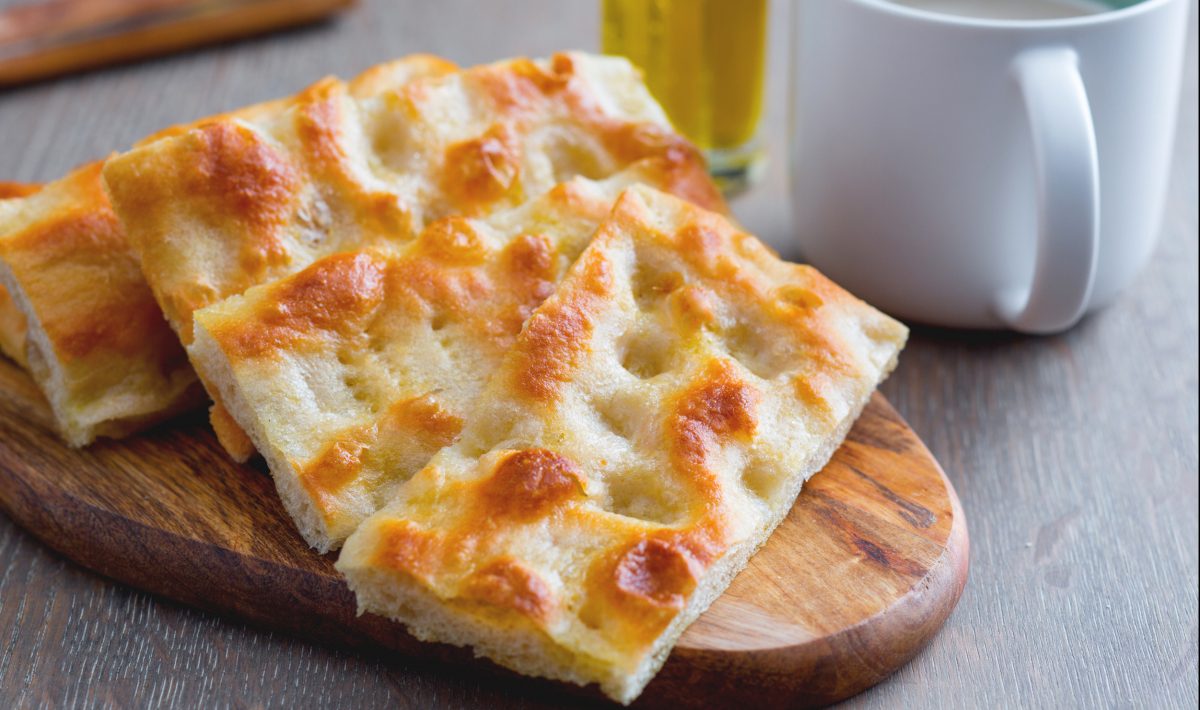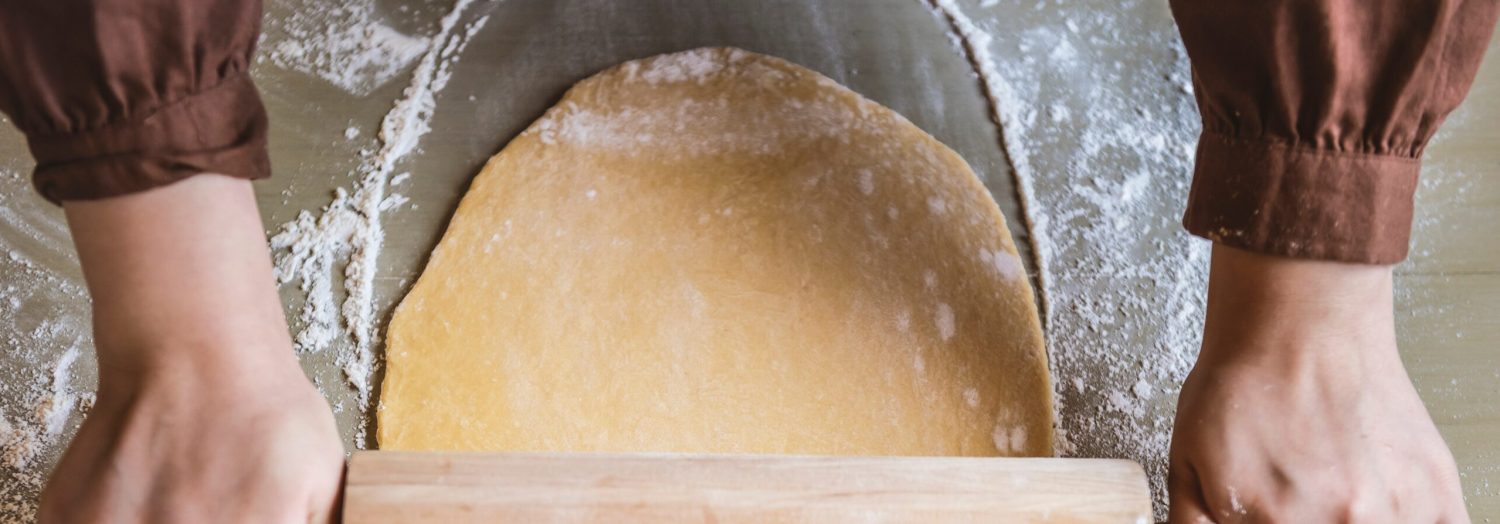Focaccia Alla Genovese is a classic Italian bread known for its soft, airy texture and rich flavor. This delightful bread is perfect for sandwiches, as a side dish, or simply enjoyed on its own. The key to a great focaccia is the generous use of olive oil and the distinctive dimpling technique that creates its characteristic appearance.
One ingredient that might not be commonly found in every home is fresh yeast. While dry yeast is more commonly available, fresh yeast can often be found in the refrigerated section of your supermarket. It provides a slightly different flavor and texture to the bread. Make sure to also pick up olive oil, as it is essential for both the dough and the topping.

Ingredients For Focaccia Alla Genovese
Flour: The base of the dough, providing structure and texture.
Water: Activates the yeast and hydrates the flour.
Salt: Enhances the flavor of the bread.
Fresh yeast: Helps the dough rise and gives it a light, airy texture.
Olive oil: Adds richness and moisture to the dough, and is used for drizzling on top.
Sugar: Feeds the yeast, helping it to activate and rise.
Technique Tip for This Recipe
When kneading the dough, ensure to use the heel of your hand to push the dough away from you, then fold it back over itself. This technique helps develop the gluten structure, resulting in a focaccia with a chewy and airy texture. If the dough feels too sticky, lightly dust your hands and the work surface with flour, but be cautious not to add too much as it can alter the dough consistency.
Suggested Side Dishes
Alternative Ingredients
all-purpose flour - Substitute with bread flour: Bread flour has a higher protein content, which can give the focaccia a chewier texture.
all-purpose flour - Substitute with whole wheat flour: Whole wheat flour adds a nutty flavor and more fiber, though it may make the focaccia denser.
lukewarm water - Substitute with milk: Milk can make the dough richer and softer, though it may alter the traditional texture.
salt - Substitute with sea salt: Sea salt can provide a more complex flavor profile.
fresh yeast - Substitute with active dry yeast: Active dry yeast is more readily available and can be used if fresh yeast is not accessible. Use about 7 g of active dry yeast to replace 25 g of fresh yeast.
fresh yeast - Substitute with instant yeast: Instant yeast can be mixed directly into the flour without needing to be dissolved in water first. Use about 8 g of instant yeast to replace 25 g of fresh yeast.
olive oil - Substitute with grapeseed oil: Grapeseed oil has a neutral flavor and high smoke point, making it a good alternative for baking.
olive oil - Substitute with canola oil: Canola oil is a neutral-flavored oil that can be used in place of olive oil, though it lacks the distinctive taste.
sugar - Substitute with honey: Honey adds a natural sweetness and can help with browning, though it may slightly alter the flavor.
sugar - Substitute with agave syrup: Agave syrup is a liquid sweetener that can be used in place of sugar, though it may make the dough a bit stickier.
Other Alternative Recipes Similar to This Dish
How to Store or Freeze This Recipe
Allow the focaccia to cool completely at room temperature before storing. This prevents condensation from forming inside the storage container, which can make the bread soggy.
For short-term storage, wrap the focaccia tightly in plastic wrap or aluminum foil. Place it in an airtight container or a resealable plastic bag to maintain its freshness. Store at room temperature for up to 2 days.
To keep the focaccia fresh for a longer period, you can refrigerate it. Wrap it in plastic wrap or aluminum foil and place it in an airtight container. It will stay fresh for up to a week. Note that refrigeration may cause the bread to become slightly firmer.
For freezing, cut the focaccia into individual portions. Wrap each piece tightly in plastic wrap, then place them in a resealable freezer bag or an airtight container. This prevents freezer burn and keeps the bread fresh.
Label the freezer bag or container with the date to keep track of how long the focaccia has been stored. Frozen focaccia can be kept for up to 3 months.
When ready to enjoy, thaw the focaccia at room temperature for a few hours or overnight in the refrigerator. To regain its crispy texture, reheat in a preheated oven at 180°C (350°F) for about 10 minutes.
For a quick reheating option, you can also use a toaster oven or a skillet over medium heat. Drizzle a bit of olive oil on the skillet to enhance the flavor and crispiness.
If you prefer a softer texture, wrap the focaccia in aluminum foil before reheating. This will help retain moisture and prevent the bread from drying out.
Avoid microwaving the focaccia as it can make the bread chewy and rubbery. If you must use a microwave, do so on a low setting and for a very short time, just enough to warm it up.
How to Reheat Leftovers
Oven Method: Preheat your oven to 180°C (350°F). Place the leftover focaccia on a baking sheet. Lightly brush the top with a bit of olive oil to prevent it from drying out. Cover it loosely with aluminum foil to retain moisture. Heat for about 10 minutes or until warmed through. This method helps maintain the crust's crispiness and the interior's softness.
Skillet Method: Heat a non-stick skillet over medium heat. Place the focaccia in the skillet and cover it with a lid. Heat for 2-3 minutes on each side. This method gives the bread a nice, crispy bottom while keeping the top soft and warm.
Microwave Method: Place the focaccia on a microwave-safe plate. Cover it with a damp paper towel to prevent it from drying out. Microwave on medium power for 20-30 seconds. This method is quick but may make the bread a bit chewy, so it's best for a fast reheat.
Toaster Oven Method: Preheat your toaster oven to 180°C (350°F). Place the focaccia directly on the rack or on a small baking sheet. Heat for 5-7 minutes or until warmed through. This method is great for small portions and keeps the crust crispy.
Steam Method: If you have a steamer, place the focaccia in the steamer basket. Steam for about 5 minutes. This method keeps the bread moist and soft, ideal if you prefer a less crispy texture.
Best Tools for This Recipe
Mixing bowl: A large bowl used to combine the flour, salt, yeast mixture, and olive oil.
Measuring cups: Used to measure the flour and olive oil accurately.
Measuring spoons: Used to measure the salt and sugar precisely.
Digital scale: Ensures accurate measurement of ingredients like flour and yeast.
Wooden spoon: Useful for mixing the dough before kneading.
Dough scraper: Helps in handling and transferring the dough.
Stand mixer: Optional, but can be used to mix and knead the dough more efficiently.
Greased bowl: Used to let the dough rise without sticking.
Plastic wrap: Covers the bowl to keep the dough moist while it rises.
Baking sheet: The surface on which the dough is spread and baked.
Oven: Preheated to 220°C (428°F) for baking the focaccia.
Pastry brush: Used to drizzle olive oil over the dough before baking.
Cooling rack: Allows the focaccia to cool evenly after baking.
How to Save Time on Making This Recipe
Use a stand mixer: Save time by using a stand mixer to knead the dough instead of doing it by hand.
Proof in a warm place: Speed up the rising process by placing the dough in a warm, draft-free area.
Pre-measure ingredients: Have all your ingredients pre-measured and ready to go before you start.
Use parchment paper: Line your baking sheet with parchment paper for easy cleanup and to prevent sticking.
Quick yeast activation: Dissolve yeast in warm water with a pinch of sugar to activate it faster.

Focaccia Alla Genovese
Ingredients
Main Ingredients
- 500 g All-purpose flour
- 325 ml Water lukewarm
- 15 g Salt
- 25 g Fresh yeast
- 60 ml Olive oil
- 10 g Sugar
Instructions
- 1. Dissolve the yeast and sugar in lukewarm water.
- 2. In a mixing bowl, combine flour and salt.
- 3. Add the yeast mixture and olive oil to the flour. Mix until a dough forms.
- 4. Knead the dough for about 10 minutes until smooth.
- 5. Place the dough in a greased bowl, cover, and let rise for 1 hour.
- 6. Preheat the oven to 220°C (428°F).
- 7. Spread the dough onto a greased baking sheet. Dimple the surface with your fingers.
- 8. Drizzle with olive oil and sprinkle with salt.
- 9. Bake for 20-25 minutes until golden brown.
Nutritional Value
Keywords
More Amazing Recipes to Try 🙂
- Welsh Bread Recipe55 Minutes
- Sweet Honey French Bread Recipe45 Minutes
- Strawberry Beer Bread with Fresh Basil Recipe1 Hours
- Raspberry Banana Bread Recipe1 Hours 15 Minutes
- Chewy French Baguette Recipe45 Minutes
- Melted Ice Cream Bread Recipe45 Minutes
- Pizza Oven Dough Recipe25 Minutes
- Banana Crumb Bread Recipe1 Hours 15 Minutes

Leave a Reply